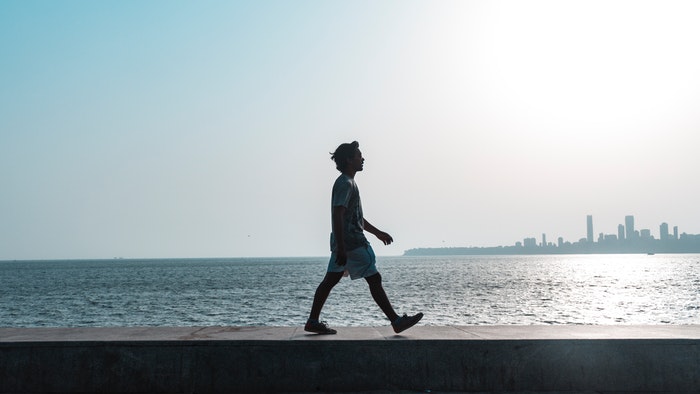
Walking is man’s best medicine. ~ Hippocrates
A reader asked me if yoga, as I wrote about last week, ultimately fixed my lower back problems. Unfortunately, the short answer is no. While it’s true I’ve come up with ways to alleviate discomfort, retain mobility, and avoid surgery, I’ve been unable to permanently resolve the problem.
What about surgery?
Despite the fact that I have friends who have had successful back surgeries, the data show that surgery leads to outcomes that aren’t significantly better than less risky, non-surgical techniques. Consider the following from a recent article in the Lancet on the matter:
The benefits of spinal fusion surgery for non-radicular low back pain thought to originate from degenerated lumbar discs (known as discogenic) are similar to those of intensive multidisciplinary rehabilitation and only modestly greater than standard non-surgical management.
For a herniated disc, early surgery is associated with faster relief of radiculopathy than with initial conservative treatment with the option of delayed surgery, but benefits diminish with longer (>1 year) follow-up.
For symptoms associated with lumbar spinal stenosis, benefits of surgery over conservative care are not clear but some beneficial effects have been shown. However, patients tend to improve with or without surgery, therefore, non-surgical management is an appropriate option for patients who wish to defer or avoid surgery.
So, for those of us who want to avoid surgery, what are the best options?
Table 2 in the Lancet article presents a comprehensive overview of interventions endorsed for “non-specific low back pain” according to Danish, US, and UK evidenced-based clinical practice guidelines. To save you from having to parse the document, I’ll summarize here.
Their recommendations place less emphasis on pharmacological and surgical treatments in favor of self-management, physical therapy, and psychological therapy. Nice to learn that doctors are giving pause before prescribing opioids or taking out the knife and, instead, suggesting patients try massage, acupuncture, spinal manipulation, yoga, and Tai-Chi.
In case it’s of interest, here are three things that have helped me.
Keep moving
After having my first major back event, I discovered rest didn’t do me much good. Today, I do whatever I can to get some form of exercise every day. I’ve tried various forms of exercise over the years, and I do best when I mix things up. As such, currently my weekly program looks something like this:
- Stretching – daily: 10-minute early morning “wake-up” active stretch routine.
- Strength training – three days/week.
- Moderate exercise to get my heart rate up (e.g., HIIT, running, swimming, etc.) – two days per week.
- Yoga – one day per week.
- Walk – one day per week.
When I travel, I tend to focus on exercises I can do in my hotel room or at a local park, especially, walking and simple bodyweight exercises.
Decompress my spine
Although something I’ve had to work up to (and something I’d recommend chatting with your doc about if you want to do it) hanging from a bar so that my spine can “stretch” out definitely seems to help. I didn’t want to spend money on an inversion table so I use a simple doorway pull-up bar at home for just that purpose. Two other techniques I use that don’t require spending any money and can but done when you go to sleep or while sitting are Esther Gokhale’s “stretchlying” and “stretchsitting” (see video below) techniques. Finally, I have found that simple squatting (e.g., yogi squat) is an absolutely fantastic, low impact way to stretch out my spine.
Sit less
Sitting has become the new smoking, and as many of us now know, sitting too much has been found to have negative effects on the health of your brain and heart. Despite Esther’s tips, it also happens to have a deleterious effect on my back.
The best thing I’ve found to alleviate problems caused by sitting is to get up and move around more. I take calls standing up and I have a break reminder on my computer that prompts me to get up out of my chair. Two apps I’ve used and can recommend are Workrave and the Marinara: Pomodoro Assistant Chrome extension. Lastly, I’ve trained my mind to use moments when I’m stuck on a problem or issue at work as prompts to get up and walk around.
Long flights and drives continue to be an issue for me but if I figure anything out in that regard I’ll be sure to let you know.
Speaking of taking a break, my computer just prompted me to get up and move around so I’ll take that as a signal to check out for the week. Although I’ll be sure to add some music to our Manufacturing Peace of Mind™ Spotify playlist, in lieu of a music video for this week, I leave you with Esther Gokhale’s presentation on stretchsitting.
Cheers…xian
Video not displaying properly? Click here.








